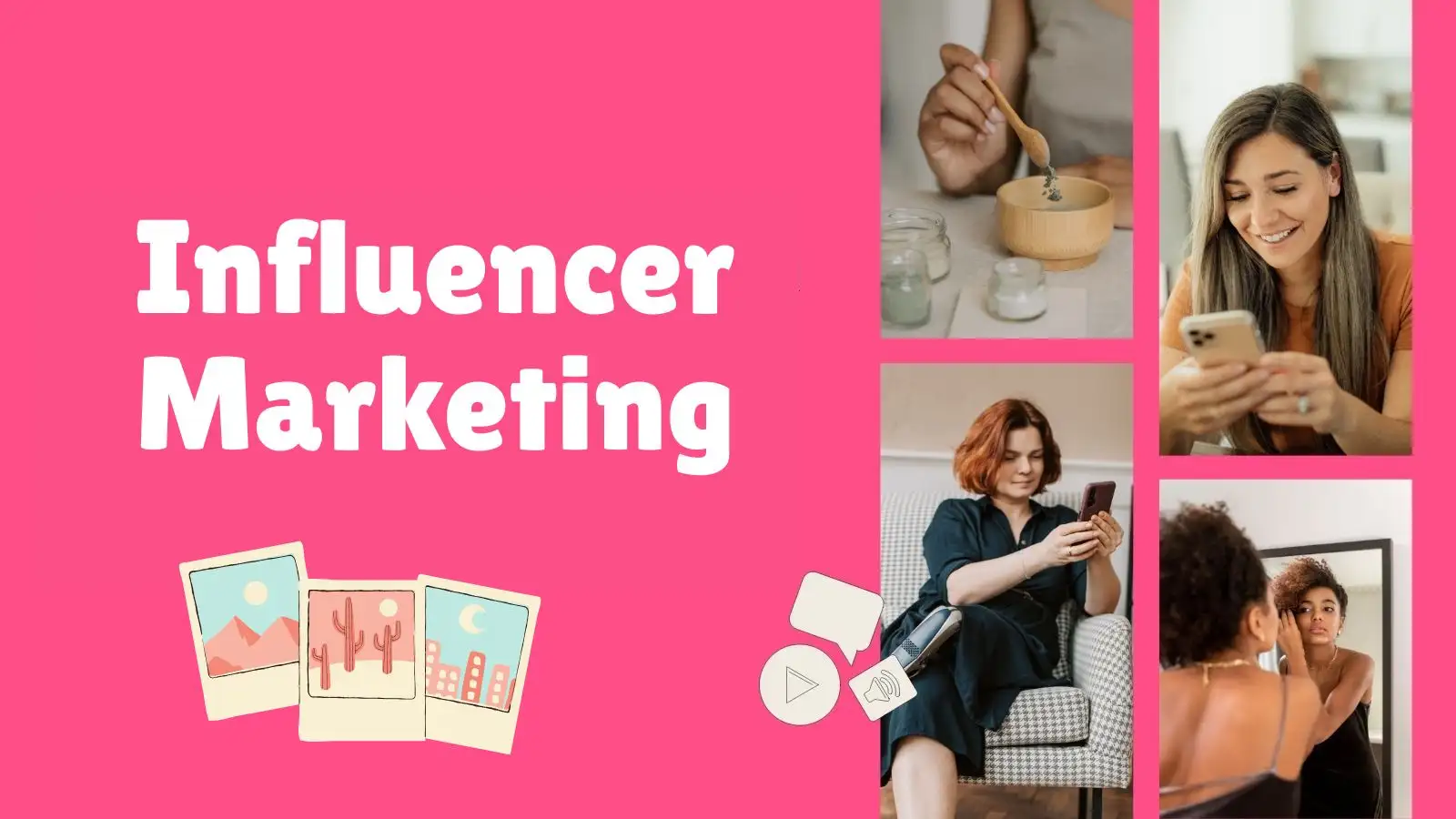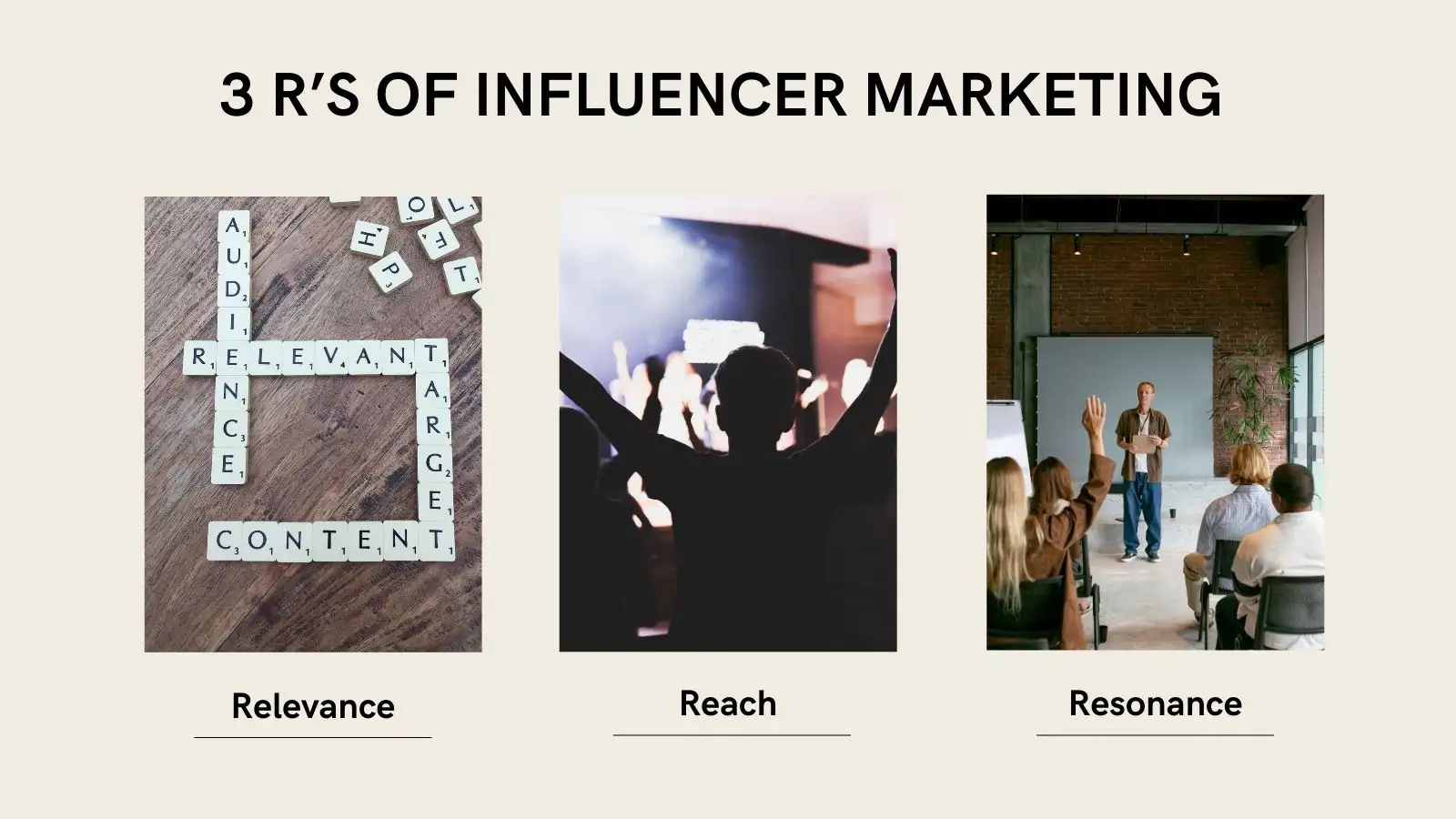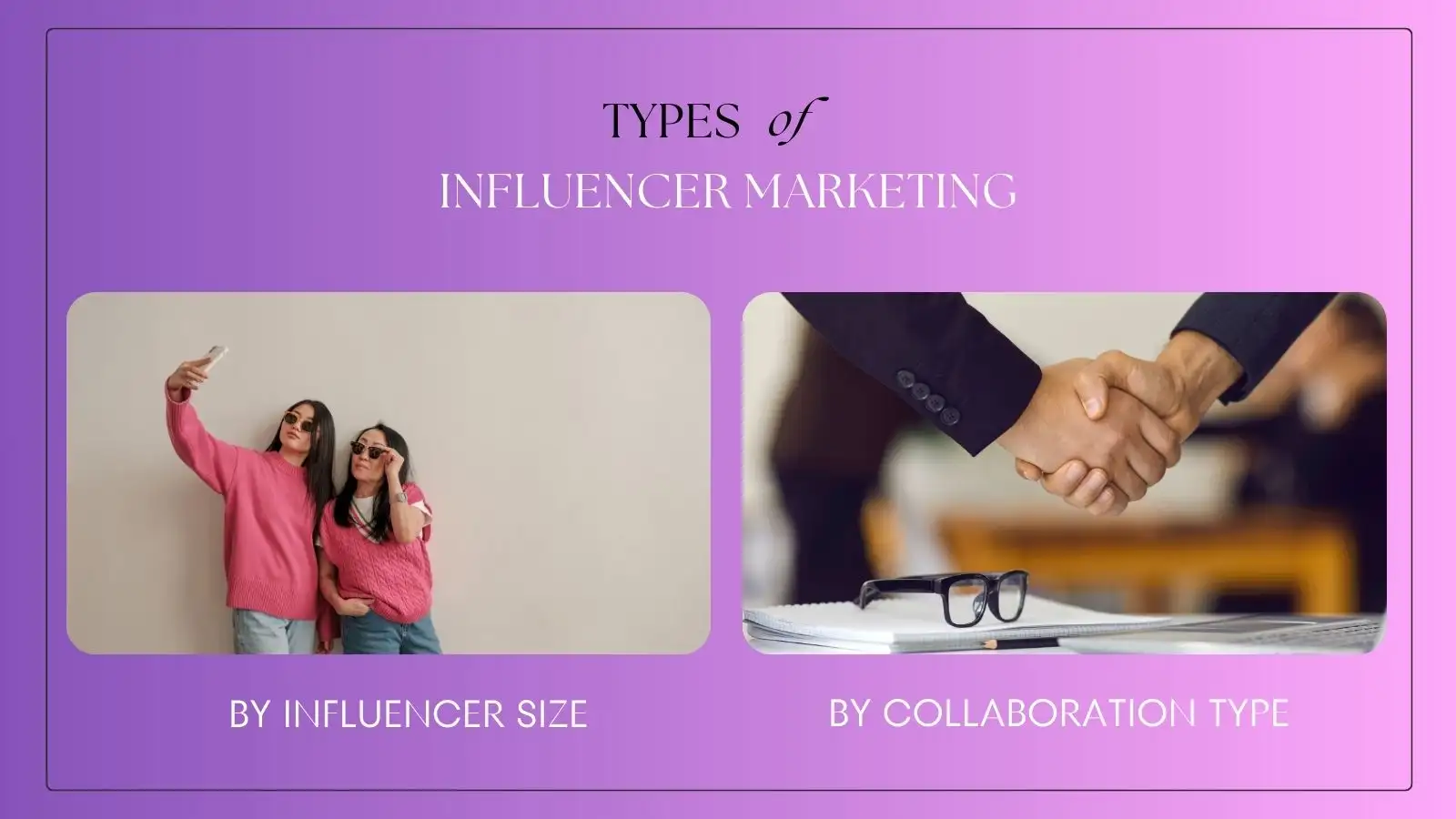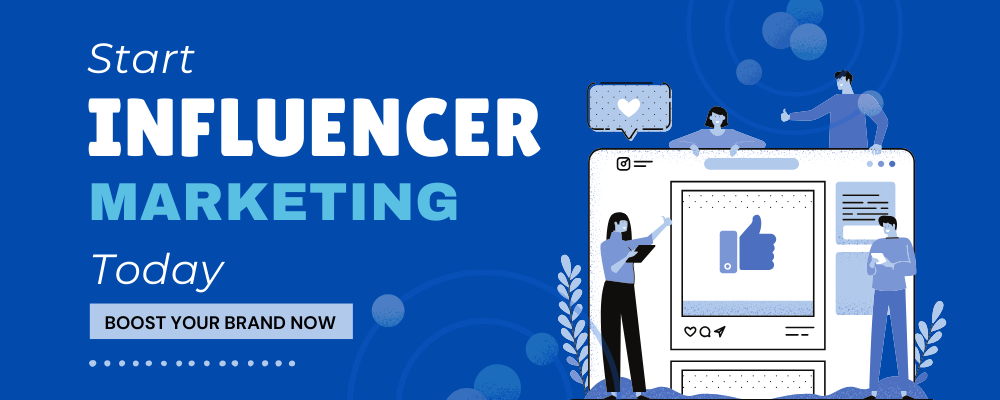Imagine scrolling through Instagram, and you see your favorite fitness influencer raving about a new protein shake. The next day, a tech YouTuber you trust reviews the latest smartwatch, calling it a game-changer. Whether we realize it or not, influencer marketing is shaping our buying decisions every day.

Influencer marketing has become one of the most effective strategies in digital marketing. By leveraging influencers’ credibility and reach, brands can connect with their audience in a way traditional advertising simply can’t. But how does it work, and what are the key elements that make an influencer campaign successful? This guide breaks down the 3 R’s of influencer marketing, its different types, and the best strategies to make it work for your brand.
The 3 R’s of Influencer Marketing
For an influencer campaign to be effective, brands need to focus on the 3 R’s:
1. Relevance
- Relevance is about ensuring that an influencer’s content, audience, and values align with your brand.
- If an influencer’s followers are not part of your target demographic, the campaign won’t be effective, even if they have millions of followers.
- Example: A sustainable fashion brand would benefit from working with an influencer who promotes ethical clothing rather than a tech reviewer.
- Brands should conduct thorough research on an influencer’s content history, tone, and audience demographics to confirm alignment.

2. Reach
- Reach refers to the total number of people who might see an influencer’s content.
- It’s important to strike a balance between large-scale influencers with massive reach and micro-influencers with highly engaged niche audiences.
- Example: A global brand launching a new product may partner with macro-influencers or celebrities for maximum exposure, while a startup may prefer micro-influencers with strong community trust.
- Brands should evaluate engagement rates, not just follower counts, to determine true reach effectiveness.
3. Resonance
- Resonance measures how deeply the influencer’s content impacts their audience and how likely their followers are to take action.
- High resonance means high engagement—likes, shares, comments, and conversions.
- Example: A beauty influencer with a smaller but highly engaged audience may drive more sales for a skincare brand than a celebrity with millions of passive followers.
- Brands should look at past campaign performance and audience interaction levels to gauge an influencer’s resonance.
Focusing on these three factors helps brands choose the right influencers and maximize their campaign’s effectiveness.
Types of Influencer Marketing
Influencer marketing isn’t one-size-fits-all. There are different types based on influencer size and campaign style.
1. By Influencer Size:
- Nano-Influencers (Under 1K followers)
- Small but highly engaged audiences, often consisting of friends and family.
- Best for hyper-local or niche marketing campaigns.
- Example: A local coffee shop partnering with a nano-influencer to promote their new menu.
- Micro-Influencers (1K–100K followers)
- Known for high engagement rates and deep trust within niche communities.
- More affordable and effective for conversions than large-scale influencers.
- Example: A skincare brand collaborating with beauty bloggers who have a loyal audience.
- Macro-Influencers (100K–1M followers)
- Professional content creators with a wide but slightly less engaged audience.
- Ideal for growing brand awareness and credibility.
- Example: A travel agency working with a travel vlogger to showcase a vacation package.
- Mega-Influencers (Over 1M followers)
- Often celebrities or internet-famous individuals with massive reach.
- Best for global brand awareness campaigns, but expensive.
- Example: A luxury fashion brand hiring a Hollywood actress for a campaign.

2. By Collaboration Type:
- Sponsored Posts
- The most common form of influencer marketing where brands pay influencers to feature their products.
- Can be static posts, Instagram stories, YouTube videos, or TikTok clips.
- Example: A fitness influencer promoting a protein supplement on their Instagram feed.
- Affiliate Marketing
- Influencers earn a commission for every sale generated through their unique referral link or discount code.
- Helps track ROI effectively.
- Example: A fashion blogger sharing an exclusive discount code for a clothing brand.
- Brand Ambassadors
- Long-term collaborations where influencers consistently promote a brand.
- Builds authenticity and stronger audience trust.
- Example: A tech influencer serving as a year-long ambassador for a smartphone brand.
- Product Reviews & Unboxings
- Influencers give their honest opinion about a product, helping to build credibility.
- Works well for tech gadgets, beauty products, and lifestyle brands.
- Example: A YouTuber unboxing and reviewing the latest gaming console.
- Live Streaming & Q&A Sessions
- Real-time engagement through platforms like Instagram Live, TikTok Live, or Twitch.
- Allows influencers to interact directly with their audience and answer questions.
- Example: A makeup artist demonstrating a new makeup palette live on Instagram while answering audience questions.
Choosing the right type depends on your brand’s goals, budget, and audience.
Influencer Marketing Strategies
To succeed in influencer marketing, brands must go beyond simply paying for a post. Here are key strategies for impactful campaigns:
1. Define Clear Objectives
- Establish whether the goal is brand awareness, lead generation, engagement, or conversions.
- Set measurable KPIs such as reach, engagement rate, or sales increase.
2. Identify & Vet Influencers
- Use influencer marketing platforms (e.g., Upfluence, AspireIQ, or Heepsy) to find the right influencers.
- Analyze audience demographics, engagement rates, and past brand collaborations.
- Look for authenticity—real engagement is more valuable than inflated follower numbers.
3. Prioritize Authenticity & Creative Freedom
- Allow influencers to create content in their own style that resonates with their audience.
- Avoid overly scripted content—authenticity builds trust and encourages conversions.
- Example: A fashion influencer styling a clothing brand’s collection in their everyday outfits instead of a direct product endorsement.
4. Leverage Multiple Content Formats & Platforms

- Combine different formats such as Instagram Reels, TikTok challenges, YouTube reviews, and live Q&A sessions.
- Cross-promote influencer content on your brand’s official pages to increase reach.
- Utilize storytelling—case studies, testimonials, and user-generated content enhance credibility.
5. Implement Long-Term Collaborations
- One-time sponsored posts can drive temporary buzz, but ongoing partnerships foster stronger relationships and consistent brand representation.
- Example: A fitness brand collaborating with a personal trainer over several months to build trust and encourage audience engagement.
6. Engage With Influencer Content
- Brands should interact with influencer posts by commenting, sharing, and featuring their content.
- Encouraging engagement boosts visibility in social media algorithms and strengthens brand-influencer relationships.
7. Track Performance & Optimize Campaigns
- Use analytics tools like Google Analytics, Facebook Pixel, and platform insights to measure ROI.
- Key metrics to track:
- Engagement Rate (likes, shares, comments per post)
- Reach & Impressions (how many users saw the content)
- Click-Through Rate (CTR) (how many people clicked on the provided link)
- Conversion Rate (how many users took action, like making a purchase or signing up)
- Adjust strategy based on data—optimize content, influencer selection, or posting frequency for better results.
By implementing these strategies, brands can maximize the effectiveness of their influencer marketing campaigns, ensuring higher engagement, brand credibility, and measurable business growth.
Influencer Marketing Best Practices
To maximize ROI and build strong brand-influencer relationships, follow these best practices:
1. Ensure Transparency & Compliance
- Influencers must disclose sponsored content using hashtags like #Ad or #Sponsored to comply with FTC guidelines.
- Transparent collaborations maintain credibility and audience trust.
2. Focus on Long-Term Relationships
- One-time promotions may generate short-term buzz, but long-term partnerships create deeper trust and brand affinity.
- Example: Nike partnering with top athletes over multiple years instead of one-off campaigns.
3. Encourage Creative Freedom
- Let influencers create content in their unique style, as forced promotions can feel inauthentic.
- Authenticity drives higher engagement and conversions.
4. Use Data-Driven Decision Making

- Track influencer performance using engagement rates, conversion tracking, and sentiment analysis.
- Use insights to optimize future campaigns.
5. Diversify Your Influencer Mix
- Collaborate with different influencer types (nano, micro, macro) to target various audience segments.
- Example: A beauty brand working with a mix of makeup artists, skincare experts, and lifestyle influencers.
6. Align Influencer Content with Brand Messaging
- Ensure the influencer’s content aligns with your brand’s values and tone to maintain consistency.
- A mismatch can lead to audience disconnect and reduced credibility.
7. Engage and Amplify Influencer Content
- Brands should interact with influencer posts by commenting, sharing, and featuring them on their own platforms.
- Encouraging interaction boosts visibility and strengthens brand-influencer relationships.
By following these best practices, brands can build successful influencer marketing campaigns that drive authentic engagement and meaningful results.
Influencer Marketing Examples
1. Unilever’s Shift to Influencer Marketing
- The brand moved from traditional ads to influencer partnerships, leveraging authentic voices to connect with consumers.
- Example: Unilever collaborated with beauty and lifestyle influencers to promote sustainable personal care products, increasing brand trust and sales.
2. Vita Coco’s Community-Centered Approach
- Instead of gifting influencers extravagant product packages, Vita Coco engaged them in real-world experiences like pop-up events and social campaigns.
- The brand used micro-influencers who aligned with its health-conscious and eco-friendly message, resulting in high engagement and brand affinity.
3. Beauty Brands Using Nano-Creators
- Brands like Glossier and The Ordinary have successfully utilized nano-influencers (under 10K followers) to drive brand awareness.
- These influencers create user-generated content (UGC) that resonates with niche audiences, often outperforming larger influencer campaigns in terms of engagement.
4. Daniel Wellington’s Influencer-First Strategy
- The watch brand built its entire marketing model around influencer collaborations rather than traditional ads.
- By gifting watches to micro-influencers and offering affiliate discounts, they created a viral trend, establishing the brand as a leader in stylish yet affordable timepieces.
5. Gymshark’s Fitness Influencer Network
- Gymshark built a community of fitness influencers who embody their brand’s fitness lifestyle.
- These partnerships have helped them grow from a small startup to a globally recognized fitness apparel brand.
6. Dunkin’ Donuts and TikTok Strategy
- Dunkin’ partnered with TikTok influencer Charli D’Amelio to create a signature drink named “The Charli.”
- The campaign generated millions of views, boosted app downloads, and increased sales, proving the power of influencer-led product collaborations.
FAQs
Use influencer marketing platforms, analyze audience demographics, and review past collaborations to ensure the influencer aligns with your brand’s values and target audience.
It increases brand awareness, enhances credibility, drives engagement, and leads to higher conversions compared to traditional advertising.
It depends on your audience. Instagram, TikTok, and YouTube are the most popular for influencer campaigns, while LinkedIn is effective for B2B brands.
Yes! Small businesses can collaborate with micro or nano-influencers who have high engagement rates within niche communities at a lower cost.
Conclusion
Influencer marketing is more than just a trend—it’s a game-changing strategy that fosters trust, engagement, and brand awareness. By focusing on the 3 R’s, selecting the right type of influencer marketing, and applying best practices, businesses can create highly effective campaigns.
With social media platforms constantly evolving, brands must stay ahead by leveraging innovative influencer collaborations. Whether you are a small business or an industry giant, influencer marketing can be the key to unlocking a new level of consumer engagement and brand loyalty.


